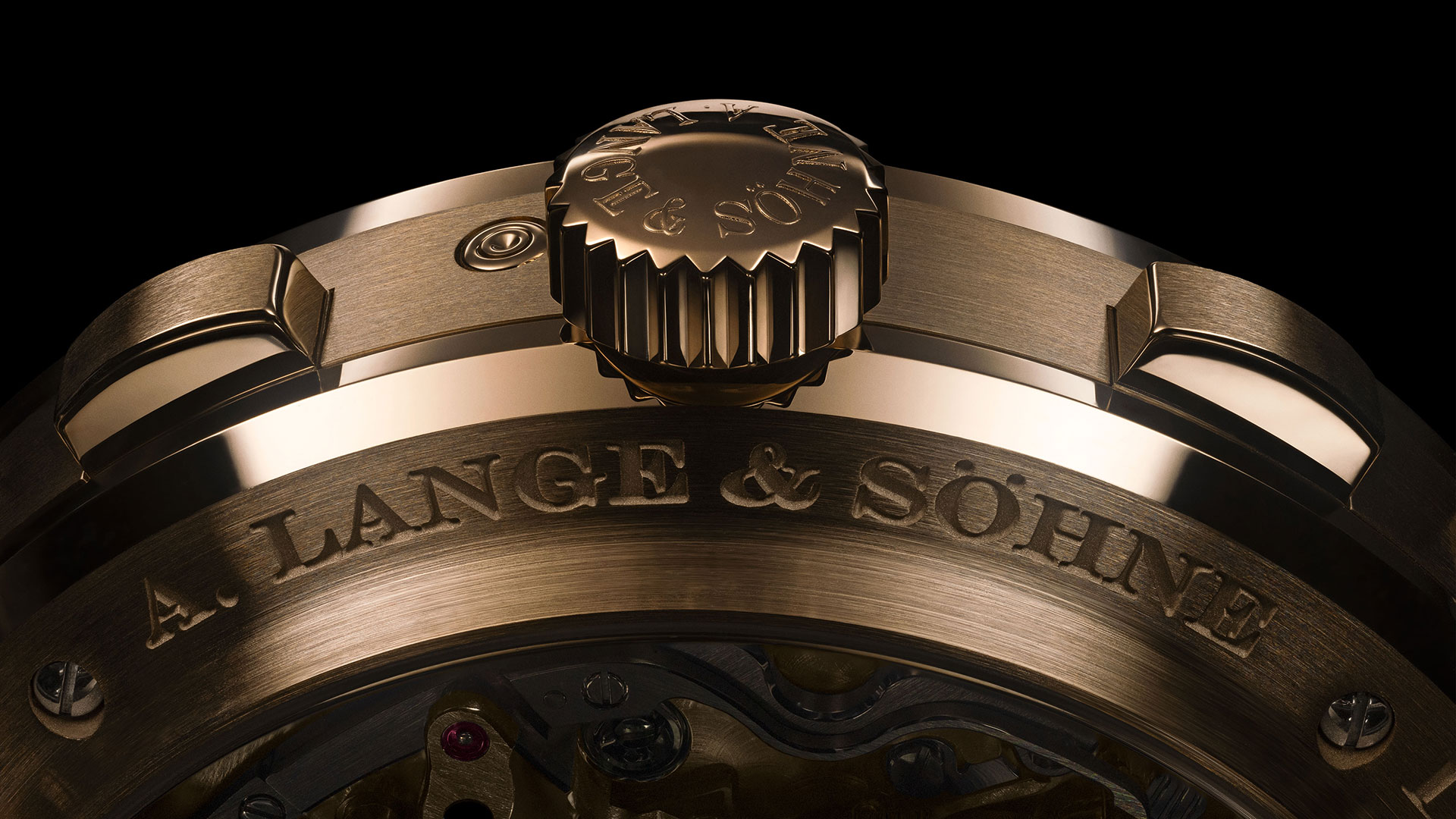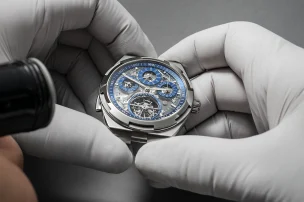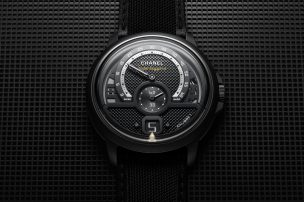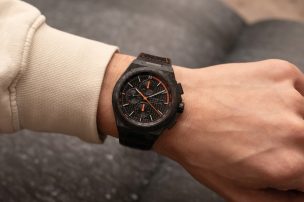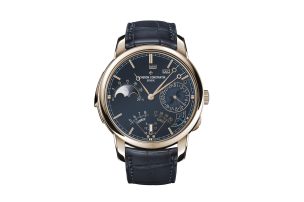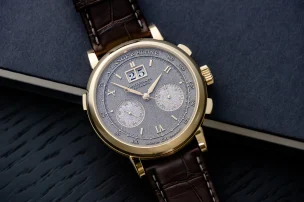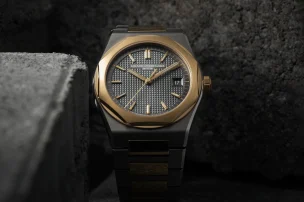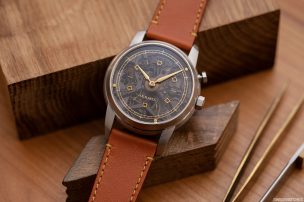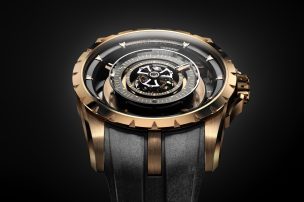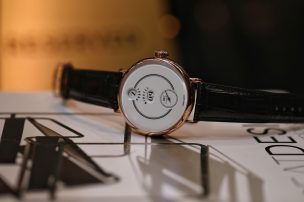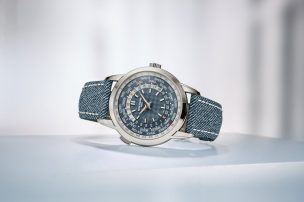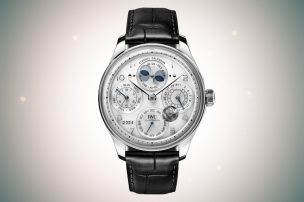
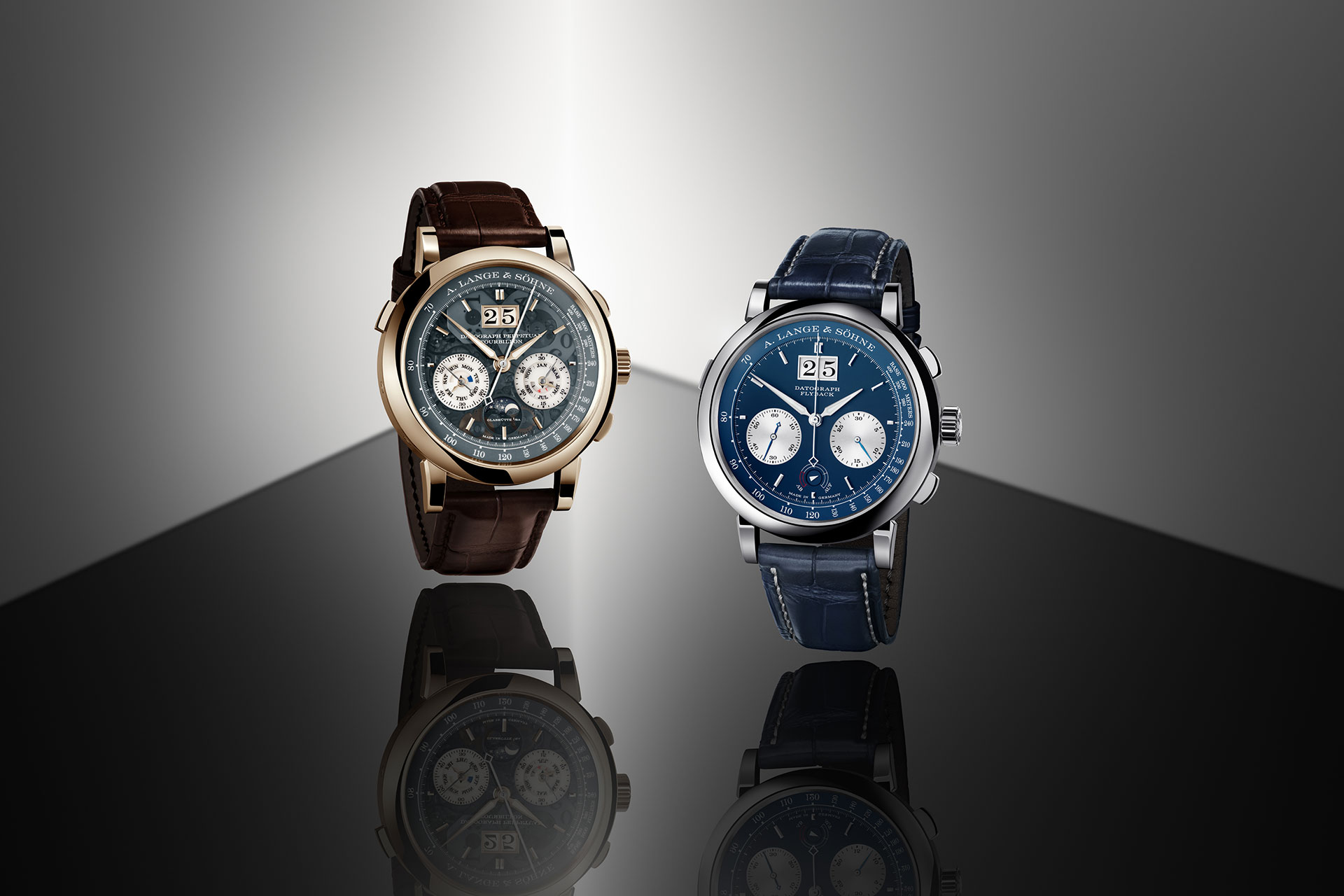
A Quarter of a Century of The Datograph: A. Lange & Söhne Celebrates With Two New Models
Over at A. Lange & Söhne, this year’s Watches & Wonders highlight is unmissable. Last year, a huge model of the Odysseus Chronograph was installed at the Saxon manufacture’s stand. This year, it is now a 50-fold enlargement of the Datograph Perpetual Tourbillon Honeygold ‘Lumen’. Five metres high, the giant watch shows passers-by what’s new and, above all, what there is to celebrate: the 25th anniversary of the Datograph, a chronograph that has not only shaped the brand, but the entire watch industry. The quarter of a century milestone is being celebrated with two new variants: the tourbillon chronograph with perpetual calendar and a second limited edition, the Datograph ‘Up/Down’ in white gold with blue dial.
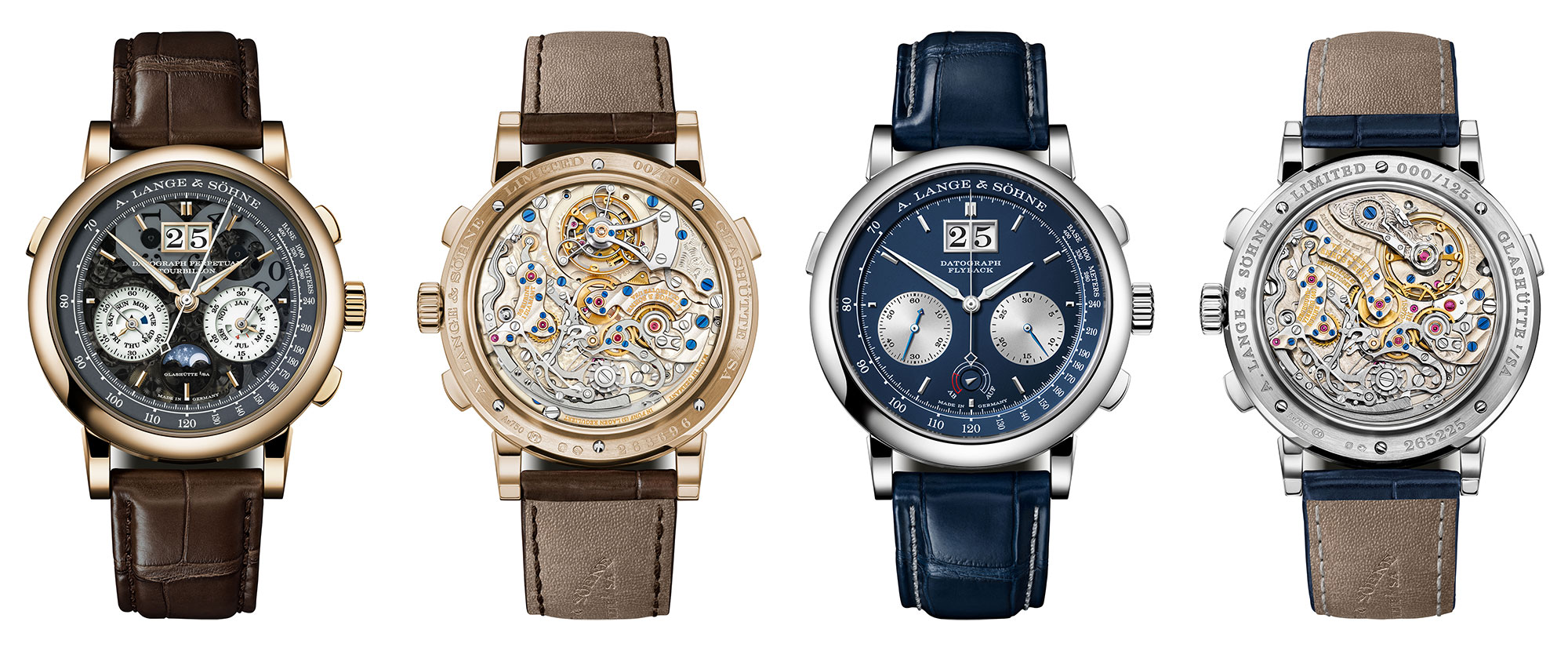
The importance of the Datograph
When the Lange 1, Tourbillon ‘Pour le Mérite’, Arkade and Saxonia, aka the first four models of the revitalised A. Lange & Söhne brand, were presented in 1994, there was no chronograph present. Yet the construction of a manufacture chronograph calibre was a top priority for Günter Blümlein, the driving force behind the brand’s comeback. In 1999, the time finally came. The reference 403.035 was introduced as the original Datograph in platinum: a column-wheel chronograph with flyback function and precisely jumping minute counter.
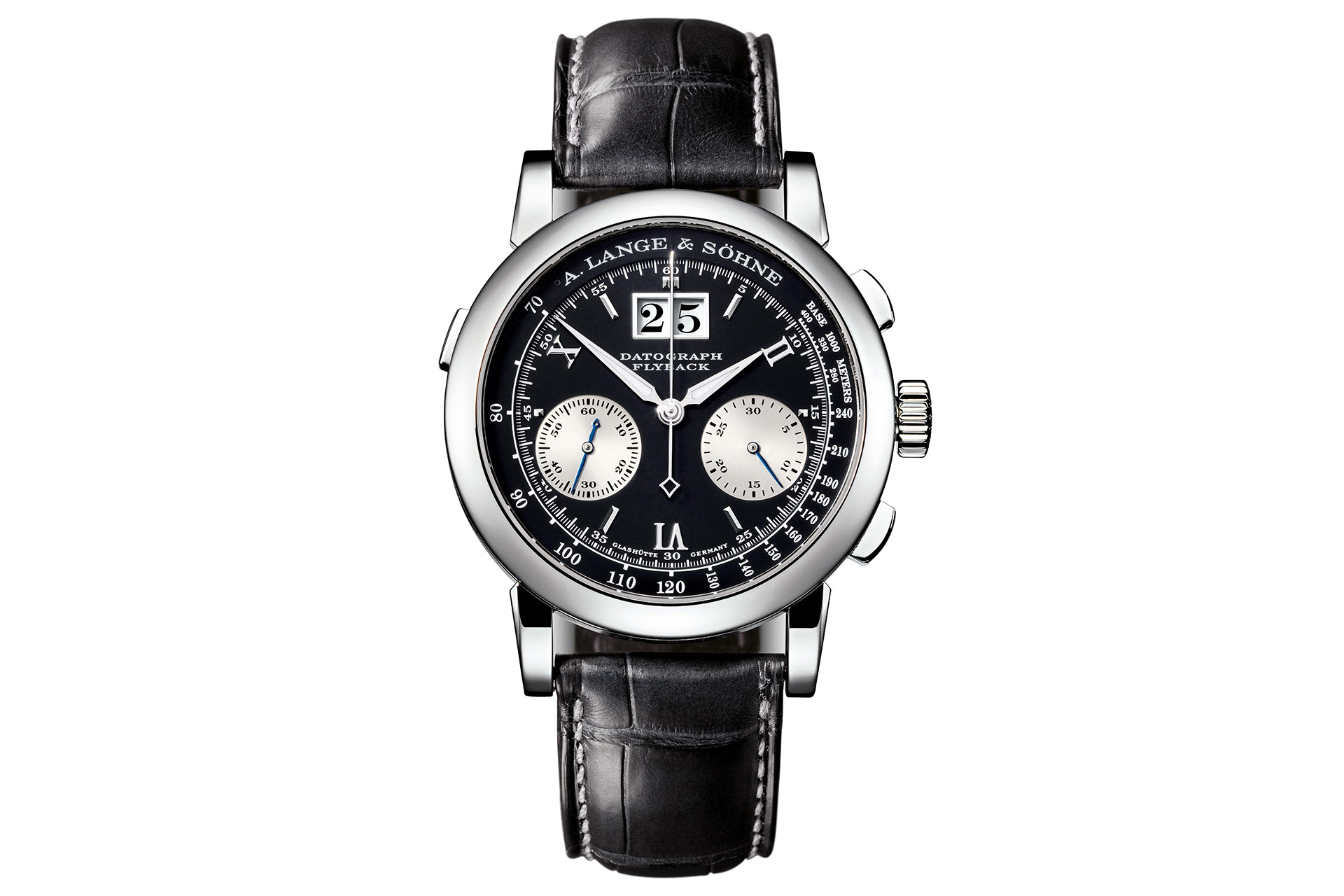
The first Datograph Reference 403.035 from 1999
With its large date at 12 o’clock, inspired by the famous clock from the Dresden Semper Opera House, it was unmistakably an A. Lange & Söhne model. The position and format of the date also broke with the usual ideal of a flyback chronograph. The subdials counters for the small seconds and minute display were not positioned in the centre at three and nine o’clock, but slightly lower at four and eight o’clock – in perfect triangular symmetry with the date.
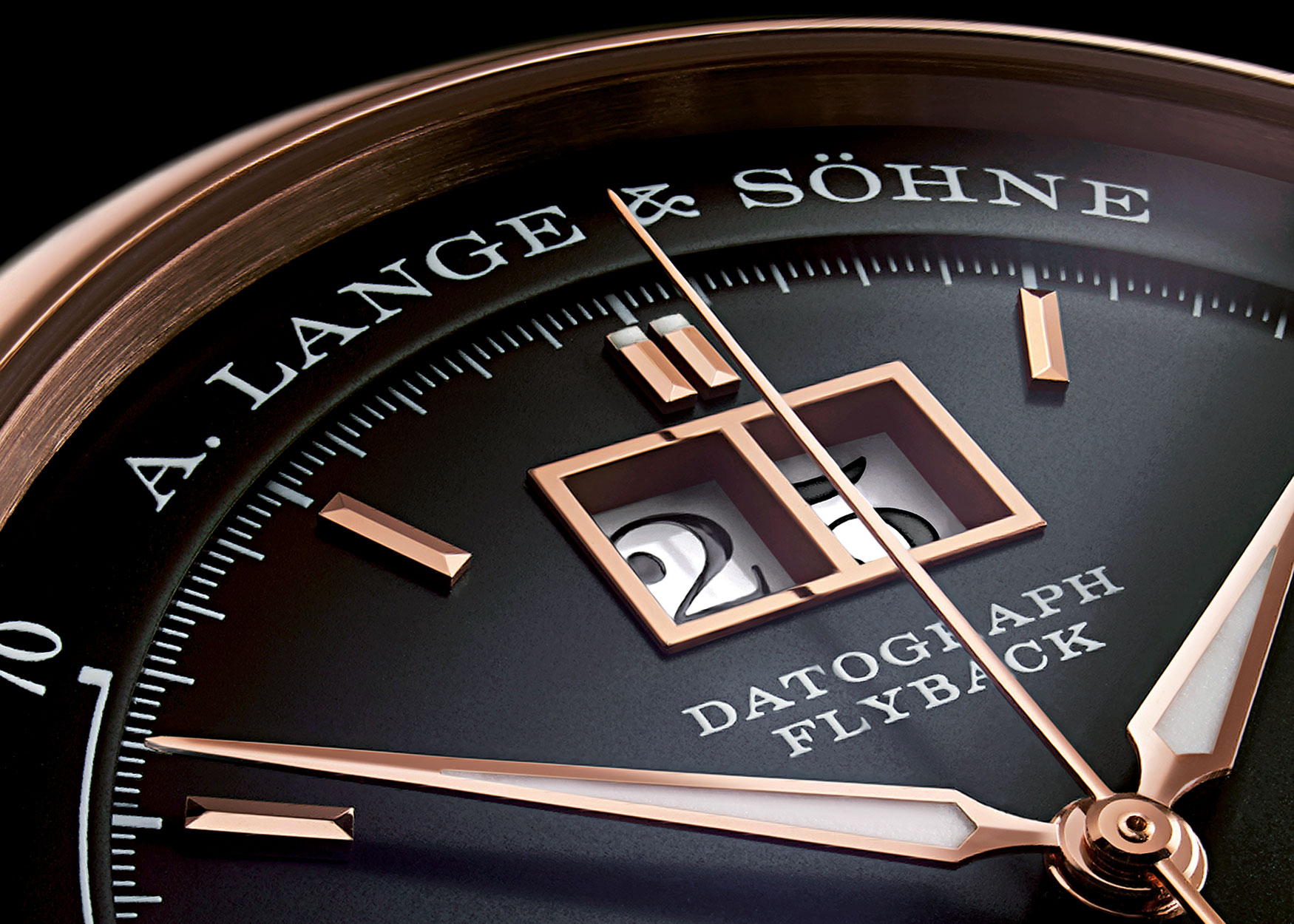
In order to follow this form of presentation, the calibre L951.1 and its necessary functions was developed after the dial had been designed, contrary to all Bauhaus rules. To this day, it forms the basis of everything that has emerged from the Datograph series over the past 25 years, from the Datograph with perpetual calendar to the Triple Split and perpetual calendar with tourbillon, and it is still regarded as one of the most technically refined and finely finished movements ever. This calibre with its free-swinging balance spring and balance with eccentric poising weights can also be seen as a self-confident statement from Glashütte aimed towards Switzerland. Patek Philippe, for example, did not yet have a manufacture chronograph movement at the time; this was only introduced in 2010 with the reference 5270.
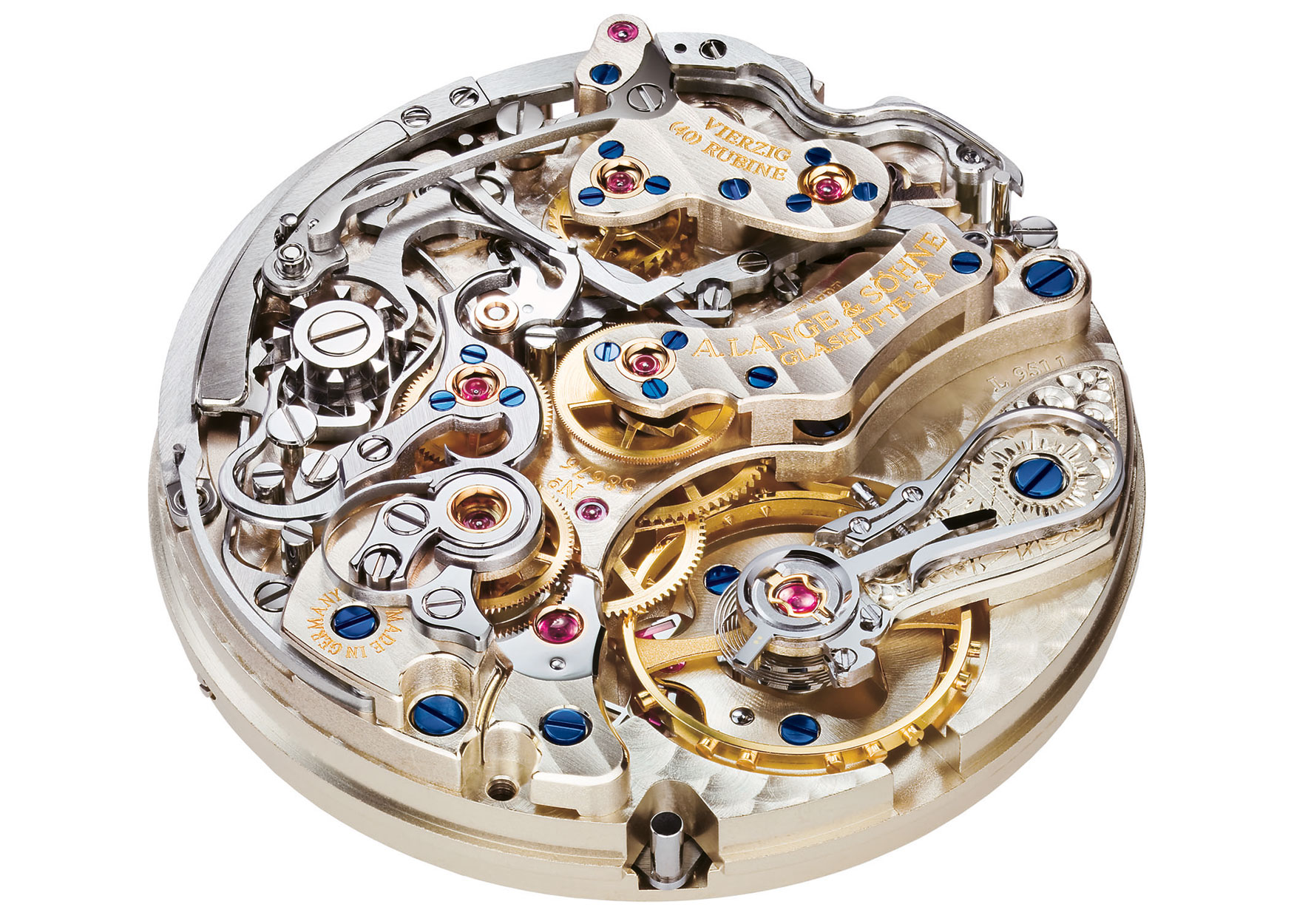
Calibre L951.1 from the first Datograph from 1999
With a diameter of 39 mm, the first Datograph was somewhat daintier than the 41 mm successive Datograph ‘Up/Down’ presented in 2012 with the further developed calibre L951.6, which has a power reserve indicator that displays how many of the maximum 60 hours of power reserve are available. The model is also distinguished by its baton indices, which replac the more conspicuous Roman numerals of its predecessor.
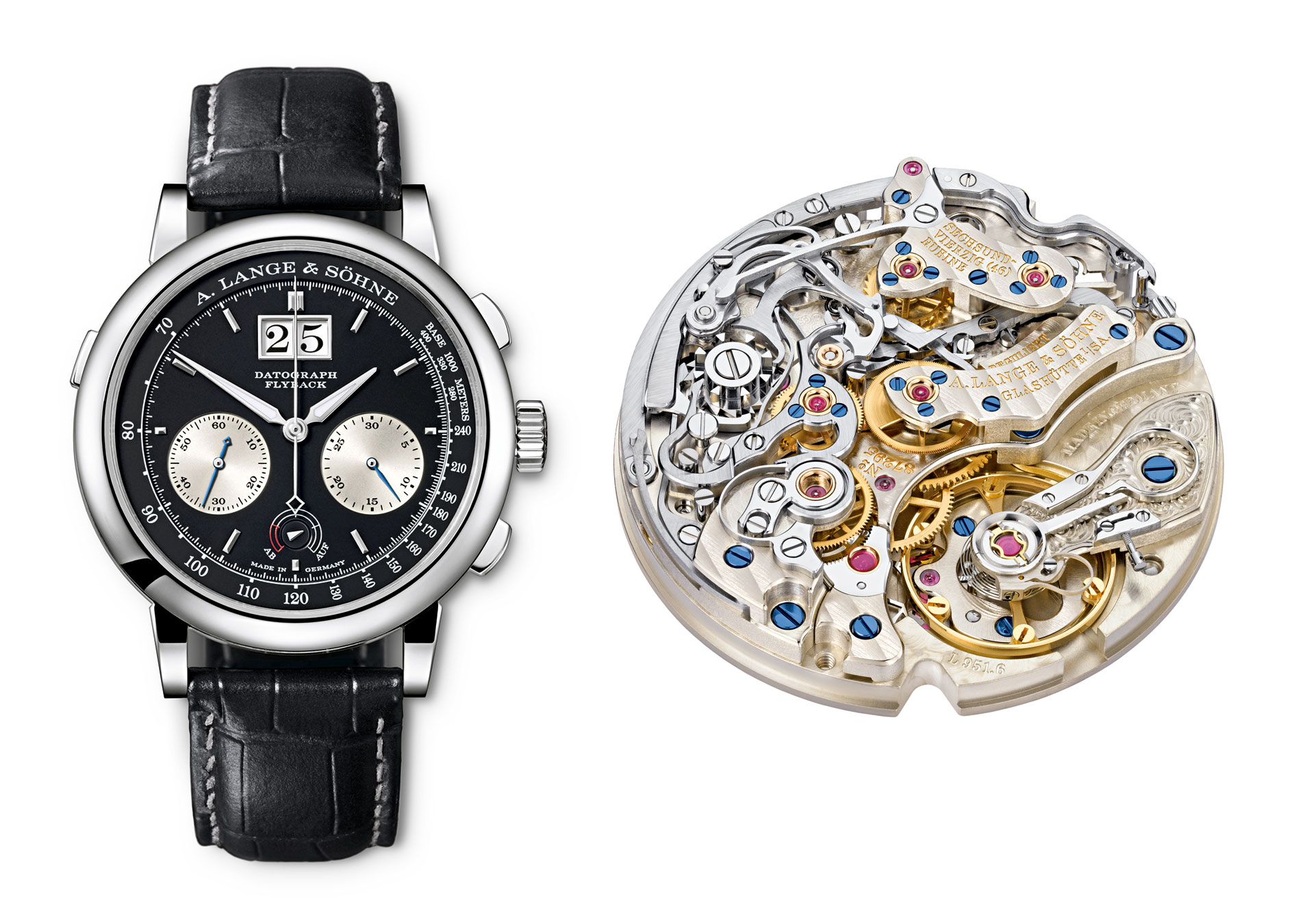
Datograph Auf/Ab from 2012 with calibre L951.6
Going for blue – 125 times over
The black dial with silver subdial counters is still considered the epitome of the Datograph. However, the first of the two anniversary Datographs proves that the combination of a blue dial and ‘rhodié-coloured’ subdial counters in combination with a white-gold case is also very charming. This means that the Datograph ‘Up/Down’ is currently available in three versions: the new limited edition of 125 pieces, as well as the combination of pink gold with a black dial, or platinum with a black dial.
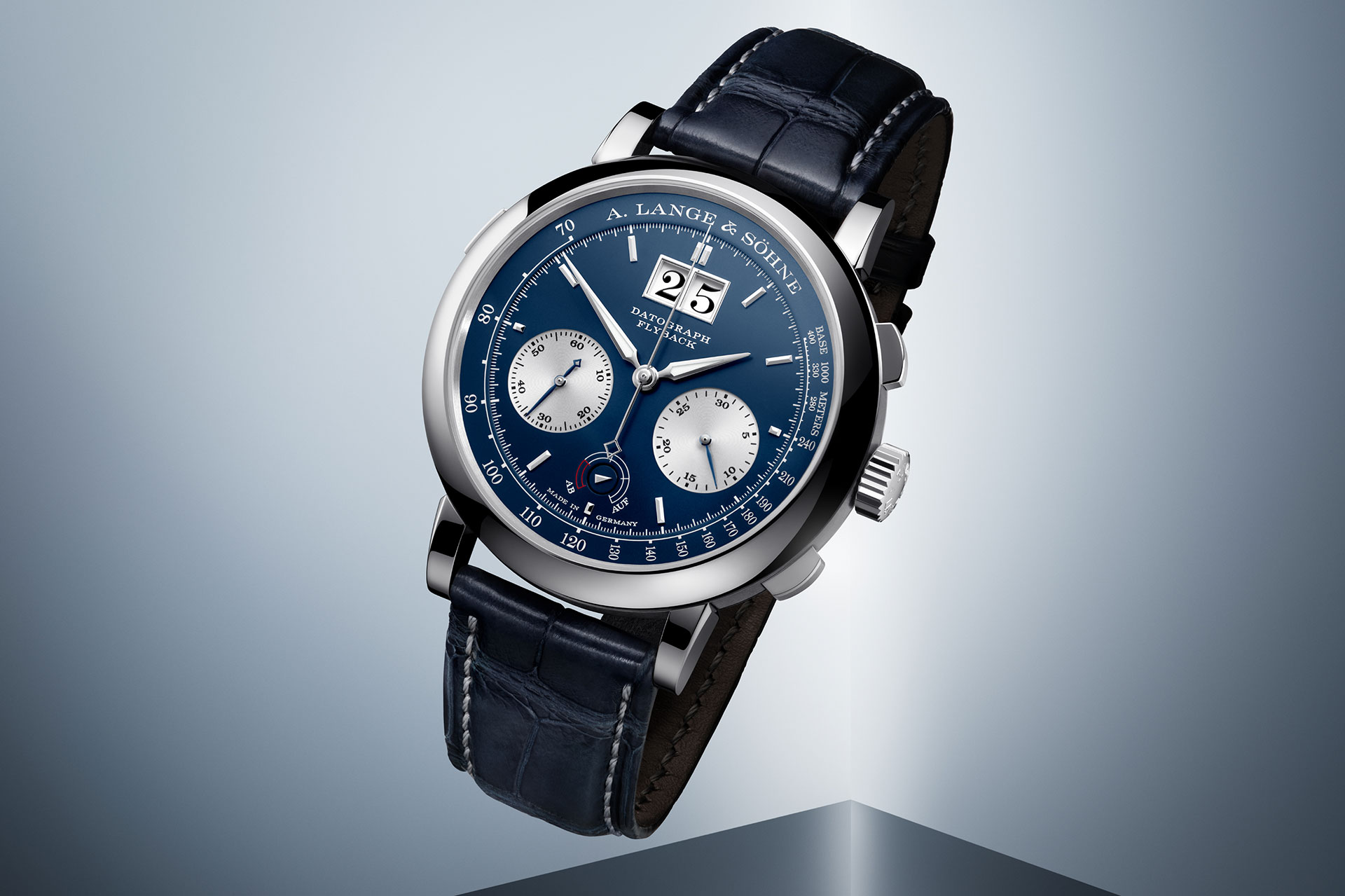
The watch is a tad more delicate and elegant in blue and silver. The contrasts are softer, just as a dark blue suit always radiates more warmth than a black suit, but with an extra dose of natural cosmopolitanism. Apart from the new colour, the timepiece is well-known and pleasantly familiar: 13.1 mm high, 41 mm in diameter, the dial made of 925 silver, the hour and minute hands filled with luminous material.
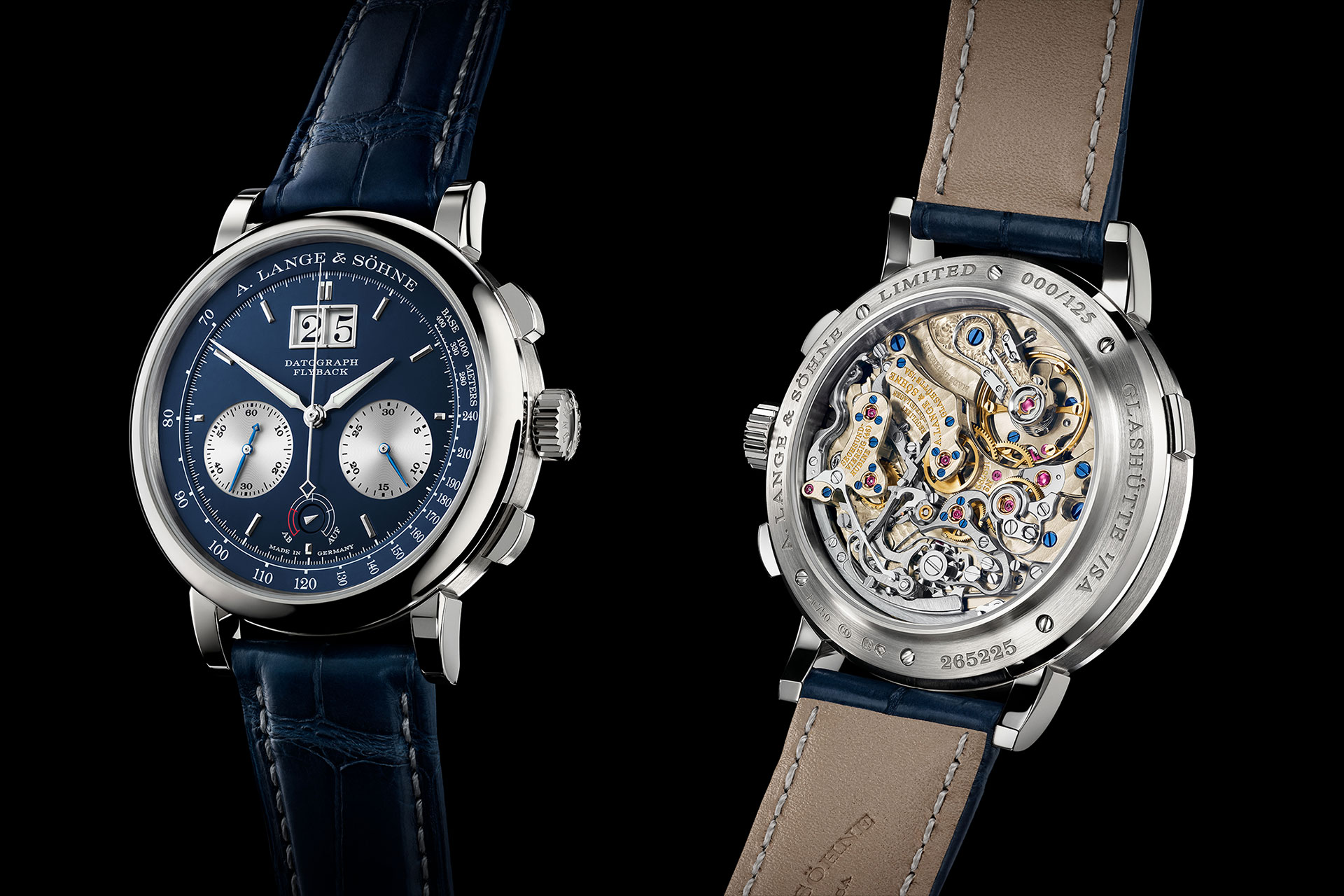
The real spectacle is the view through the sapphire crystal case back of the hand-wound calibre 951.6 with its hand-engraved balance cock and the bridges and plates made of natural nickel silver. The minute-counter mechanism is also visible. The chronograph operates at 18,000 vibrations per second, which corresponds to 2.5 Hz and enables time measurements down to a fifth of a second. The complete calibre consists of a total of 451 parts and, as is typical for Lange, is assembled twice and the rate accuracy is finely regulated in five different positions.

Calibre L951.6
All in all, this version of the Datograph ‘Up/Down’ may be the latest watch from A. Lange & Söhne, but both the look and the movement are those of an absolute classic. Absolutely worthy of a model that has countless admirers among connoisseurs. Price: 125.000 euros.
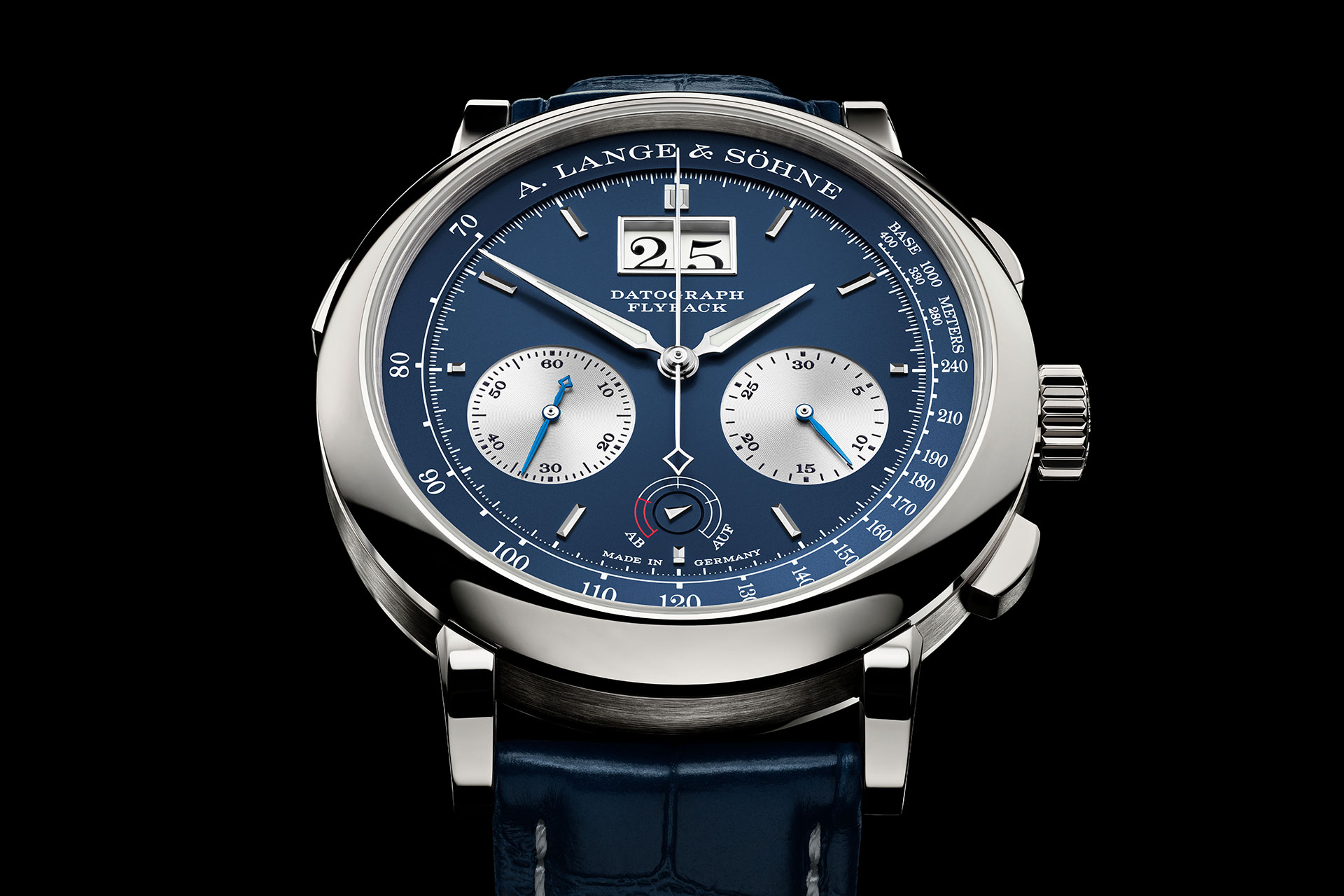
After a little more? Tourbillon, perpetual calendar, ‘Lumen’ and Honeygold
Like the Datograph ‘Up/Down’ edition, the second anniversary Datograph also combines an already familiar combination of complications, albeit in an extremely spectacular guise. The Datograph Perpetual Tourbillon was presented for the first time in 2016 in platinum with a black dial. Now, however, the watch is adorned with everything that is as rare as it is special at A. Lange & Söhne, and is therefore extremely desirable.
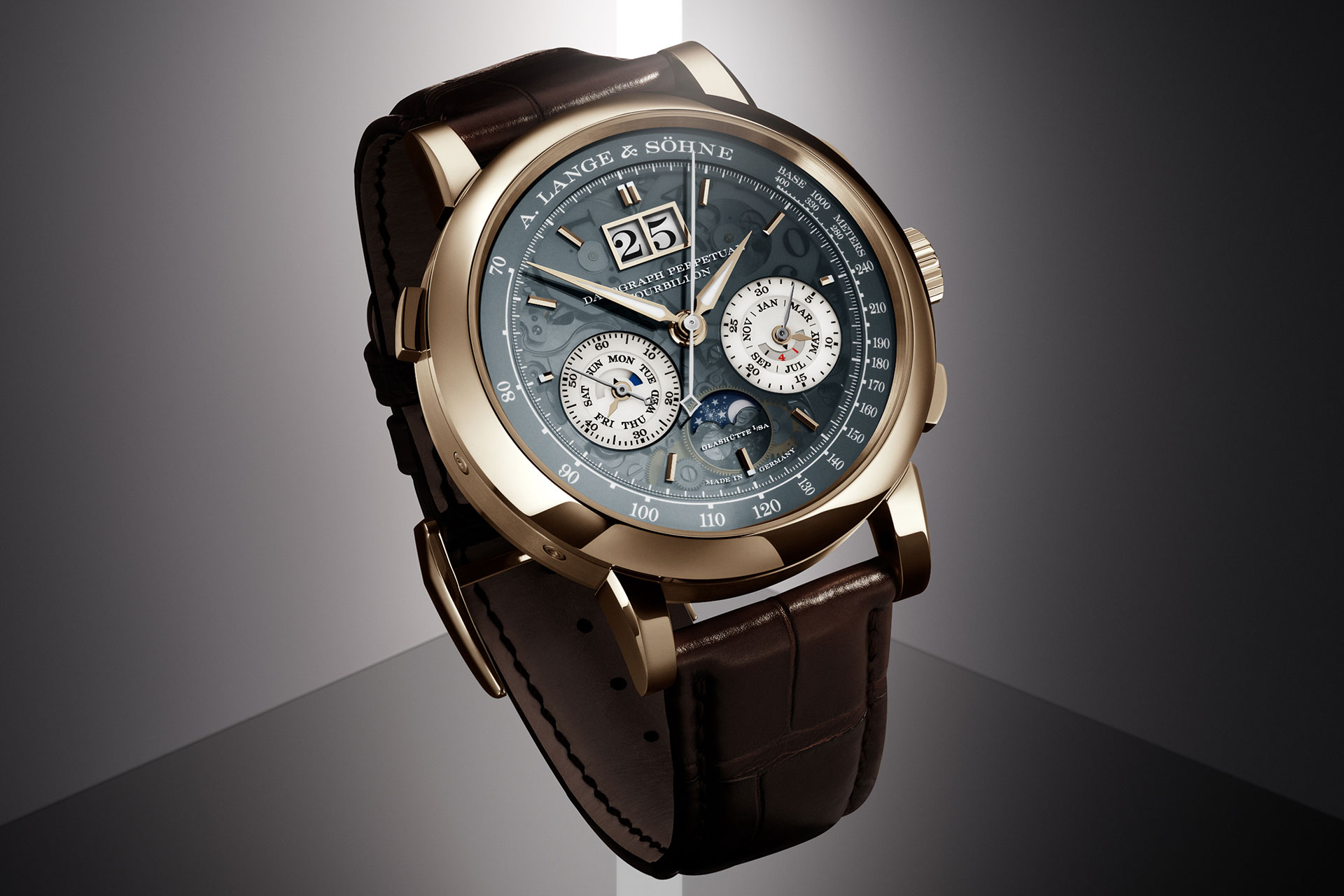
The case is made from the company’s own Honeygold alloy – a successful, soft and not too intense rose-gold tone. This Honeygold covers the semi-transparent ‘Lumen’ dial made of sapphire crystal, which provides a view of the movement and has a very special effect in the dark: both the large date and the sub-dials are luminescent, while the hour and minute hands are coated with luminous material. Even the chronograph seconds hand is completely coated.

Limited to 50 pieces, the Datograph Perpetual Tourbillon Honeygold ‘Lumen’ is now the sixth model in the ‘Lumen’ series, which celebrated its premiere in 2013 with a variant of the large Lange 1, has been very popular with collectors ever since, and whose unique look already graced a platinum Datograph model back in 2018.
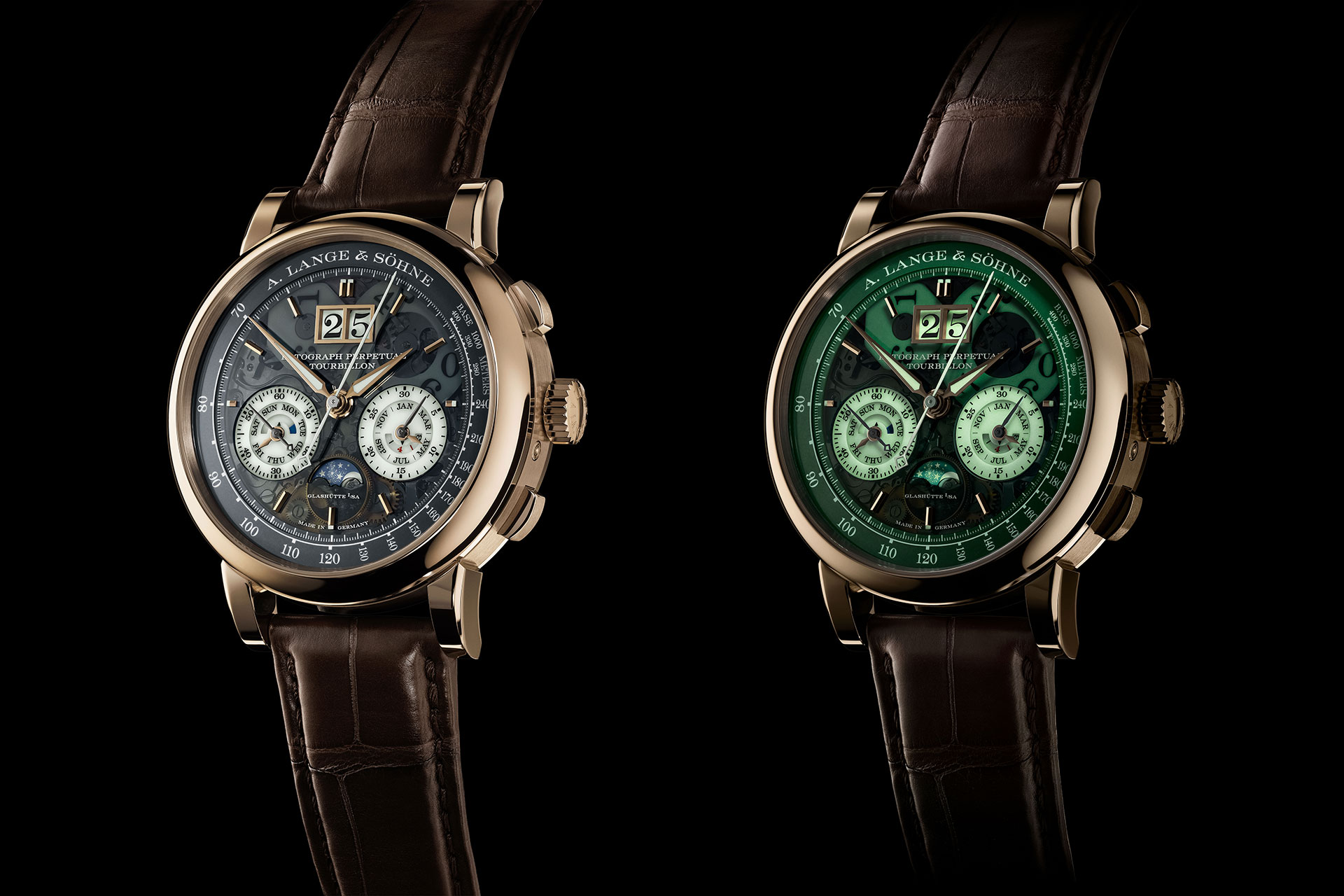
From a purely aesthetic point of view, this watch is a marvel, combining the classic Honeygold with the technical ‘Lumen’ look. In theory, two things come together that do not necessarily belong together, but in practice, this drastic contrast brings together two worlds that harmonise surprisingly well, not least because the dial itself is extremely uncluttered despite all its functions. Aside from that, you can lose yourself for hours in the meticulously detailed moonphase alone.
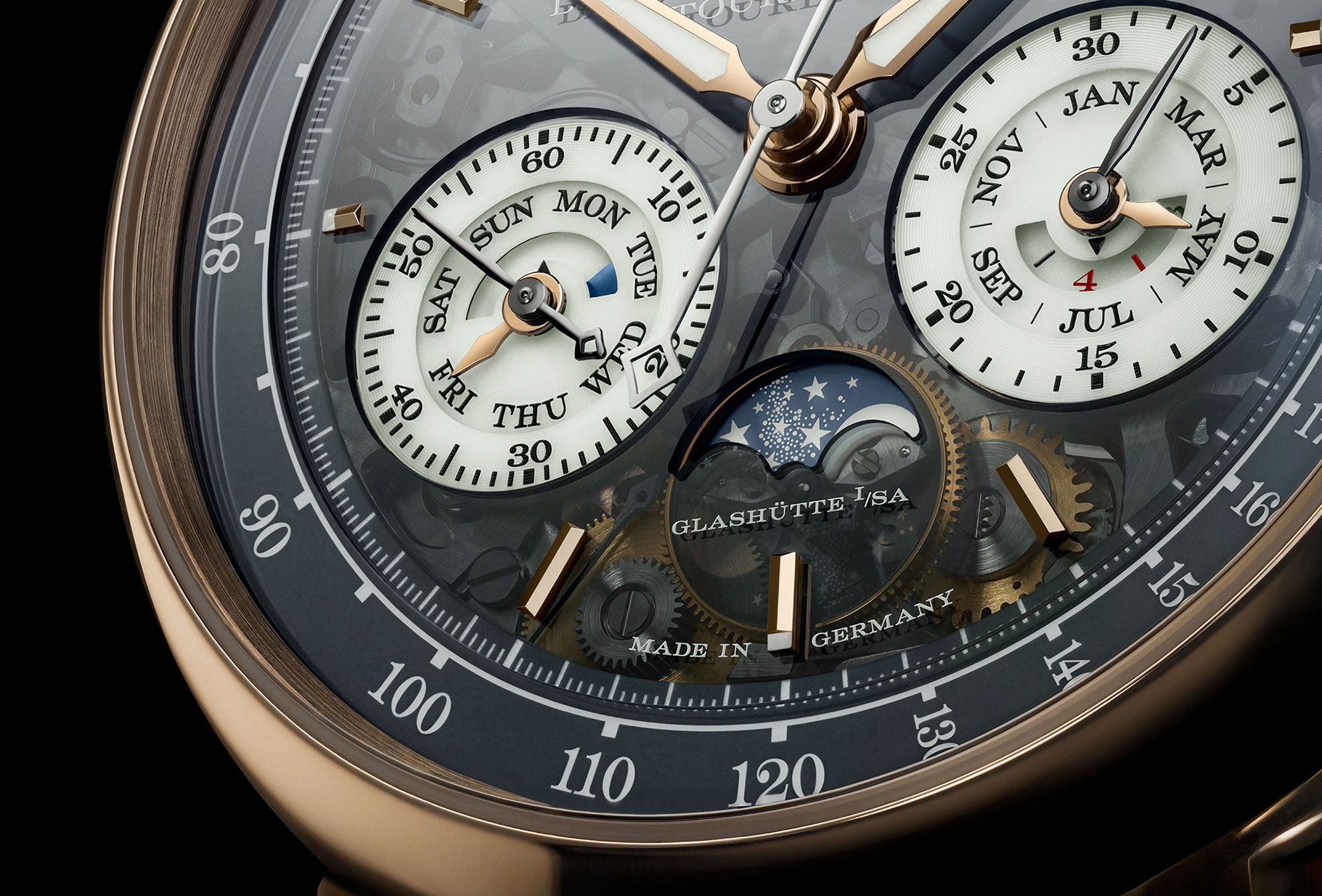
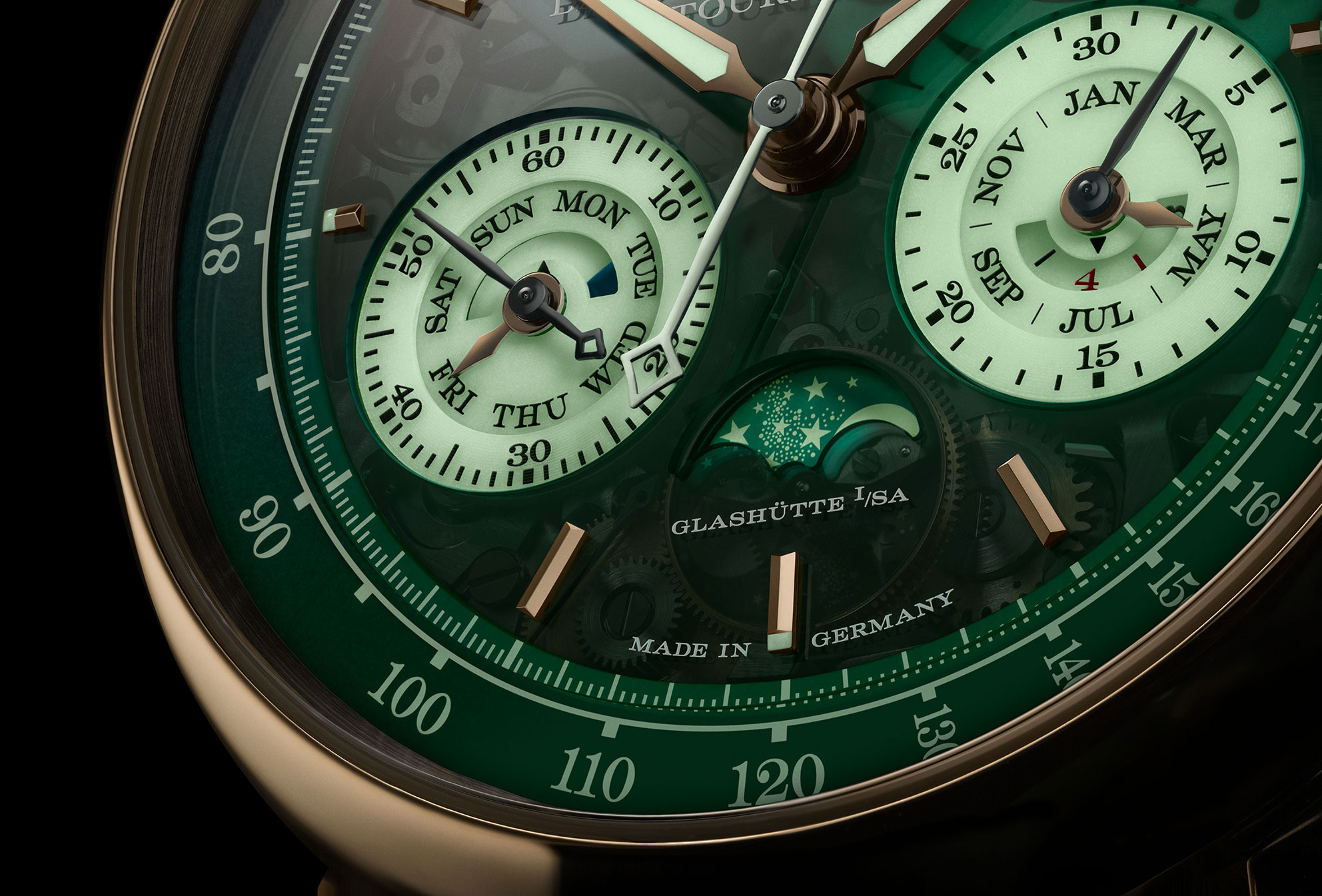
But the reference is also a true technical showpiece. The perpetual calendar has jumping displays, while the minute tourbillon with stop seconds reduces the influence of gravity and increases accuracy. The stop-seconds function makes it possible to set the time to the second by stopping the tourbillon at any oscillation point of the balance or position of the cage. This is made possible by a lever mechanism. When the crown is pulled, a stop lever is released and a stop spring is guided in the direction of the balance. The pressure exerted by the spring immediately stops the balance and tourbillon cage.

Neues Manufaktur-Kaliber L952.4
This new highly complex hand-wound manufacture caliber L952.4 consists of 684 parts and has a power reserve of 50 hours. It is the 72nd manufacture calibre from A. Lange & Söhne since the brand was re-founded in 1990. Although it is based on an existing Lange movement, it took 3.5 years to develop this new calibre. It is housed in a case measuring 41.5 mm in diameter that is 14.6 mm high. Cost: around 620,000 euros. It seems certain that the watch will find buyers at this price, but it is still an extremely confident price. For comparison: around 300,000 euros were asked for the first 100 examples of the platinum Datograph with perpetual calendar and tourbillon in 2016.
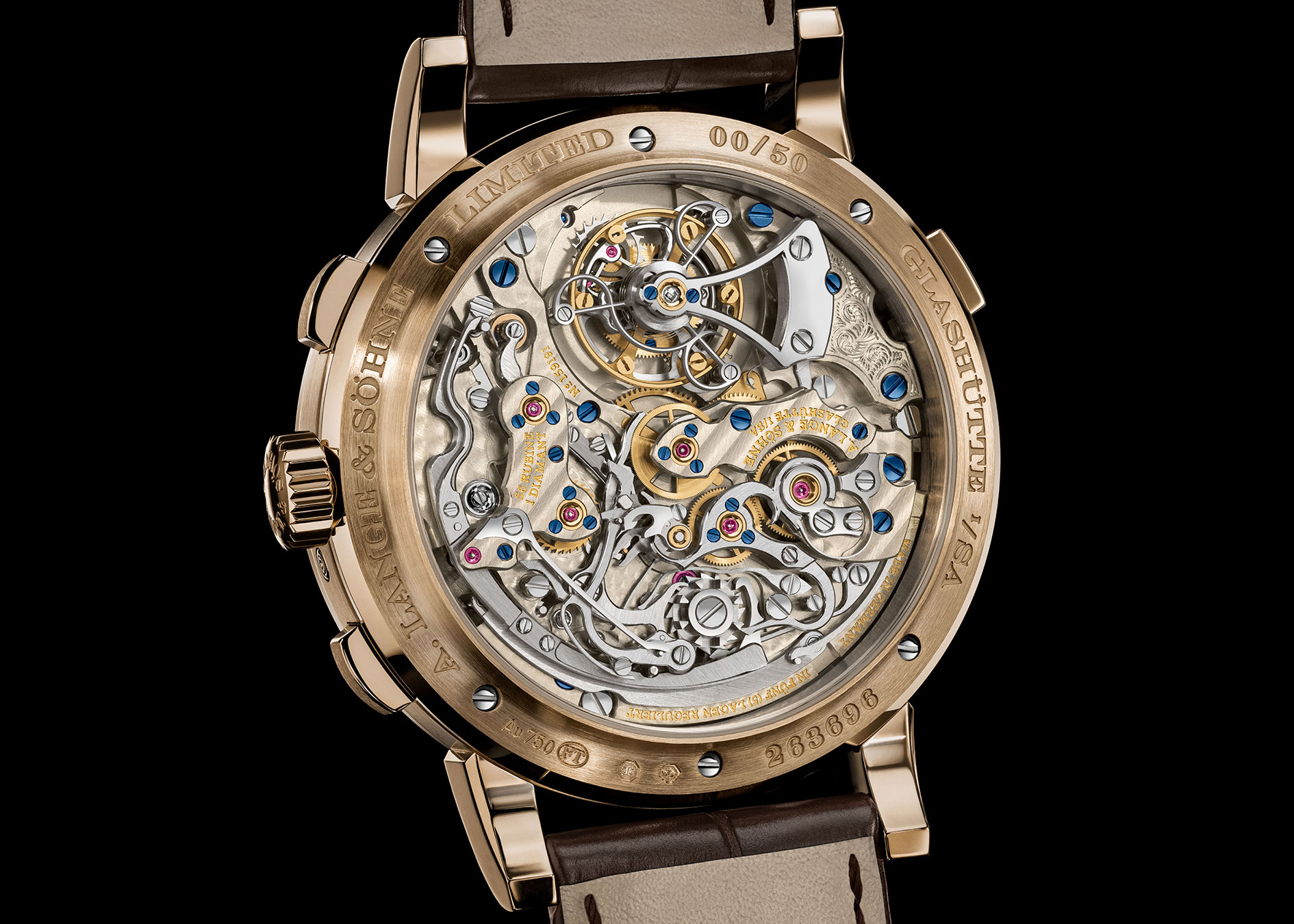
Happy Birthday, A. Lange & Söhne
To mark its 25th anniversary, A. Lange & Söhne is presenting these two versions of the Datograph; two very impressive watches. The importance of the model series for the manufacture can also be derived from the fact that the Datograph is taking central stage this year. After all, if this watch has been around for a quarter of a century, then models such as the Lange 1 presented in 1994 and the Saxonia are celebrating their 30th birthday this year – an anniversary that could well be celebrated in an industry that is very open to marketing-optimised anniversaries. But the star of Watches & Wonders this year remains the Datograph. One look at the pictures of the latest Lange family members shows that it deserves it.
